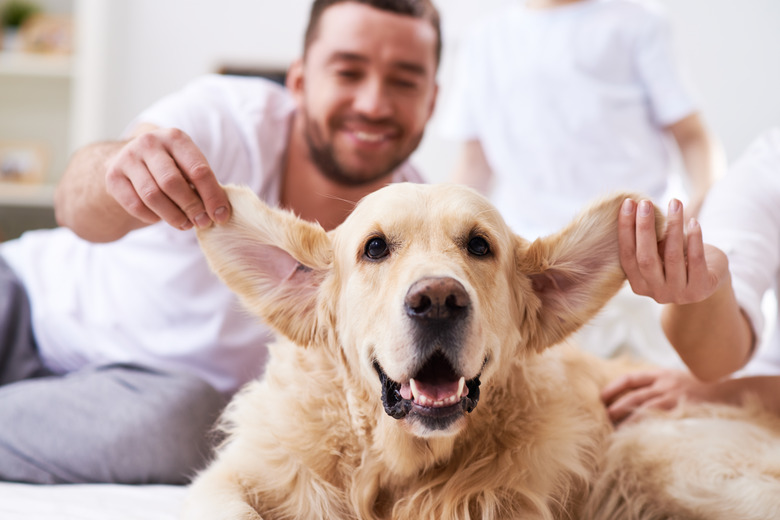Do Dogs' Ears Help Them Keep Cool?
In warmer seasons or winters when heaters are running, dogs can become uncomfortable. Dogs do not sweat profusely, but they have glands in various places, including in their ears. This is not the primary method dogs use for cooling off, however. Panting is the main way dogs control their body temperature.
Most of the time, cold dog ears are due to their surroundings, but it can be a sign that your dog is not comfortable with the temperature around him. When a dog's ears are hot, however, there are various possible causes. If it's not due to the weather, your dog might have a viral infection or a cold that causes a fever, or he might have a more centralized infectious issue, such as ear mites. If you have any concerns about your dog's ear temperature or other issues, contacting your veterinarian is always the best step to take.
Why dogs' ears are cold
Why dogs' ears are cold
If a dog's ears are cold, it may be benign and caused by the temperature around her, from a windy day to sitting near an air conditioner. But in addition to physically feeling cold, if you see your dog shivering and acting uncomfortable, it may be too cold for her. Paying attention to the temperature inside and outside is an important part of keeping your pet safe and healthy.
If your dog is outside for a long time in the cold, she is at risk of frostbite and hypothermia. Ears are one of the places a dog is prone to frostbite, so if your dog is outside in cooler weather and you notice that her ears are cold, move her indoors to a warmer area to prevent frostbite. It can occur quickly in freezing temperatures, and signs of frostbite include color changes and swelling. It's important to take your dog to the vet at signs of frostbite because when the condition advances, loss of body parts and tissue may occur.
Reasons dog ears are hot
Reasons dog ears are hot
Sometimes, a dog's ears are hot simply because of the temperature. It's important to keep your home at a comfortable temperature for your dog since his insulated coat blocks him from sweating around most of his body. To help your dog maintain his 101.1-degrees-Fahrenheit body temperature, keep your home below 81 degrees at all times, as that is the minimum temperature at which dogs overheat. Dogs should never be left in the car; weather can seem cool, but the inside of a car heats up quickly.
If it's not warm in your house due to the weather or a furnace running, the culprit may be an illness. If a dog's ear is warm, it could be due to a viral or bacterial infection. Symptoms of illness can show up in many places, including dog ears. Cold, flu, or other systemic infections can lead to fevers, which impact the temperature of a dog's ear. If dogs ears are warm but the rest of the body is not, your pet likely has a bacterial or viral ear canal infection. This may be due to ear mites or a buildup of yeast.
How dogs cool off
How dogs cool off
While dogs can sweat from their paw pads when they get hot, it's not their main method of regulating their temperature. Rather, dogs pant to stay cool and rely on insulation from the fur to keep their body temperature stable. While it may seem like a good idea to shave your dog in the summer, this is actually dangerous, as it can lead to heat stroke.
Dogs pant and release heat from their paws to cool down, but heat stroke can happen quickly, and it's often a medical emergency. Watch for heavy panting, drooling, or falling. If your dog seems to be having a heat stroke, it's best to get him out of the heat and put slightly cold water on his fur before contacting your veterinarian.
References
- American Kennel Club: Is Your Home's Heat Too Warm For Your Dogs?
- Windmill Animal Hospital: Why Do My Dog's Ears Feel Hot?
- Blue Cross: Heatstroke in Dogs
- VCA Animal Hospitals: Frostbite in Dogs
- Ontario SPCA and Humane Society: "Cool" Test: How To Tell If Your Dog is Too Cold
- American Kennel Club: Do Dogs Sweat?
- American Kennel Club: Dog Ear Infections: Symptoms, Causes, Treatment, and Prevention
